iii Preface This Instructors’ Manual provides solutions to most of the problems in ANTENNAS: FOR ALL APPLICATIONS, THIRD EDITION. All problems are solved for which answers appear in Appendix F of the text, and in addition, solutions are given for a large fraction of the other problems. Including multiple parts, there are 600 problems in the text and solutions are presented here for the majority of them. Many of the problem titles are supplemented by key words or phrases alluding to the solution procedure. Answers are indicated. Many tips on solutions are included which can be passed on to students. Although an objective of problem solving is to obtain an answer, we have endeavored to also provide insights as to how many of the problems are related to engineering situations in the real world. The Manual includes an index to assist in finding problems by topic or principle and to facilitate finding closely-related problems. This Manual was prepared with the assistance of Dr. Erich Pacht. Professor John D. Kraus Dept. of Electrical Engineering Ohio State University 2015 Neil Ave Columbus, Ohio 43210 Dr. Ronald J. Marhefka Senior Research Scientist/Adjunct Professor The Ohio State University Electroscience Laboratory 1320 Kinnear Road Columbus, Ohio 43212 �
iv Table of Contents Preface iii Problem Solutions: Chapter 2. Antenna Basics............................................................................................1 Chapter 3. The Antenna Family..................................................................................17 Chapter 4. Point Sources.............................................................................................19 Chapter 5. Arrays of Point Sources, Part I..................................................................23 Chapter 5. Arrays of Point Sources, Part II.................................................................29 Chapter 6. The Electric Dipole and Thin Linear Antennas.........................................35 Chapter 7. The Loop Antenna.....................................................................................47 Chapter 8. End-Fire Antennas: The Helical Beam Antenna and the Yagi-Uda Array, Part I...............................................................................................53 Chapter 8. The Helical Antenna: Axial and Other Modes, Part II.............................55 Chapter 9. Slot, Patch and Horn Antennas..................................................................57 Chapter 10. Flat Sheet, Corner and Parabolic Reflector Antennas...............................65 Chapter 11. Broadband and Frequency-Independent Antennas....................................75 Chapter 12. Antenna Temperature, Remote Sensing and Radar Cross Section............81 Chapter 13. Self and Mutual Impedances....................................................................103 Chapter 14. The Cylindrical Antenna and the Moment Method (MM)......................105 Chapter 15. The Fourier Transform Relation Between Aperture Distribution and Far-Field Pattern................................................................................107 Chapter 16. Arrays of Dipoles and of Aperture...........................................................109 Chapter 17. Lens Antennas..........................................................................................121 Chapter 18. Frequency-Selective Surfaces and Periodic Structures By Ben A. Munk......................................................................................125 Chapter 19. Practical Design Considerations of Large Aperture Antennas................127 Chapter 21. Antennas for Special Applications..........................................................135 Chapter 23. Baluns, etc. By Ben A. Munk..................................................................143 Chapter 24. Antenna Measurements. By Arto Lehto and Pertti Vainikainen....................................................................................147 Index 153 �
1 Chapter 2. Antenna Basics 2-7-1. Directivity. Show that the directivity D of an antenna may be written ()()()()∫∫Ω=∗∗πφθφθπφθφθ422maxmax,,41,,drZEErZEED Solution: avUUDmax),(φθ=, 2maxmax),(),(rSUφθφθ=, ∫∫Ω=πφθπ4),(41dUUav 2),(),(rSUφθφθ=, ()()ZEESφθφθφθ,,),(∗= Therefore ()()()()∫∫Ω=∗∗πφθφθπφθφθ422maxmax,,41,,drZEErZEED q.e.d. Note that =2rarea/steradian, so 2SrU= or (watts/steradian) = (watts/meter2) × meter2 2-7-2. Approximate directivities. Calculate the approximate directivity from the half-power beam widths of a unidirectional antenna if the normalized power pattern is given by: (a) Pn = cos θ, (b) Pn = cos2 θ, (c) Pn = cos3 θ, and (d) Pn = cosn θ. In all cases these patterns are unidirectional (+z direction) with Pn having a value only for zenith angles 0° ≤ θ ≤ 90° and Pn = 0 for 90° ≤ θ ≤ 180°. The patterns are independent of the azimuth angle φ. Solution: (a) oo1HP12060 2)5.0(cos2=×==−θ, 278)120(000,402==D (ans.) (b) oo1HP9045 2)5.0(cos2=×==−θ, 94.4)90(000,402==D (ans.) �
2 (c) oo31HP93.7437.47 2)5.0(cos2=×==−θ, 3.7)75(000,402==D (ans.) 2-7-2. continued (d) )5.0(cos21HPn−=θ, 21))5.0((cos000,10nD−= (ans.) *2-7-3. Approximate directivities. Calculate the approximate directivities from the half-power beam widths of the three unidirectional antennas having power patterns as follows: P(θ,φ) = Pm sin θ sin2 φ P(θ,φ) = Pm sin θ sin3 φ P(θ,φ) = Pm sin2 θ sin3 φ P(θ,φ) has a value only for 0 ≤ θ ≤ π and 0 ≤ φ ≤ π and is zero elsewhere. Solution: To find D using approximate relations, we first must find the half-power beamwidths. θ−=902HPBW or 2HPBW90−=θ For sin θ pattern, 212HPBW90sinsin=⎟⎠⎞⎜⎝⎛−=θ, ⎟⎠⎞⎜⎝⎛−−21sin2HPBW901, 9021sin2HPBW1−⎟⎠⎞⎜⎝⎛−−, oHPBW 120= For sin2 θ pattern, 212HPBW90sinsin22=⎟⎠⎞⎜⎝⎛−=θ, 212HPBW90sin=⎟⎠⎞⎜⎝⎛−, oHPBW 90= For sin3 θ pattern, 212HPBW90sinsin33=⎟⎠⎞⎜⎝⎛−=θ, �
3 3212HPBW90sin=⎟⎠⎞⎜⎝⎛−, oHPBW 74.9= *2-7-3. continued Thus, 70.3)90)(120(000,4082.3)90)(120(253,41 deg. sq. 253,41HPHP=≅===φθD (ans.) 45.4)9.74)(120(000,4059.4)9.74)(120(253,41=≅== (ans.) 93.5)9.74)(90(000,4012.6)9.74)(90(253,41=≅== (ans.) *2-7-4. Directivity and gain. (a) Estimate the directivity of an antenna with θHP = 2°, φHP = 1°, and (b) find the gain of this antenna if efficiency k = 0.5. Solution: (a) 4HPHP100.2)1)(2(000,40000,40×===φθD or 43.0 dB (ans.) (b) 44100.1)100.2(5.0×=×==kDG or 40.0 dB (ans.) 2-9-1. Directivity and apertures. Show that the directivity of an antenna may be expressed as ()()()()∫∫∫∫∫∫∗∗=ApApApdxdyyxEyxEdxdyyxEdxdyyxED,,,,42λπ where E(x, y) is the aperture field distribution. Solution: If the field over the aperture is uniform, the directivity is a maximum (= Dm) and the power radiated is P′. For an actual aperture distribution, the directivity is D and the power radiated is P. Equating effective powers for P(θ,φ) = sin θ sin2φ for P(θ,φ) = sin θ sin3φ for P(θ,φ) = sin2 θ sin3φ �
4 PDPD=′m, ()()∫∫∗=′=ApppdxdyZyxEyxEAZEEAPPDD,,4*avav2mλπ 2-9-1. continued where ∫∫=pApdxdyyxEAE),(1av therefore ()()()()2,,4,,ApApApExydxdyExydxdyDExyExydxdyπλ∗∗=∫∫∫∫∫∫ q.e.d. where ()()()()avavavavav2av1(),,,,peappAppEEAEEEAEAExyExydxdyExyExydxdyAε∗∗∗∗∗====∫∫∫∫ 2-9-2. Effective aperture and beam area. What is the maximum effective aperture (approximately) for a beam antenna having half-power widths of 30° and 35° in perpendicular planes intersecting in the beam axis? Minor lobes are small and may be neglected. Solution: ooHPHP3035,AθφΩ≅=× 22oo221.335303.57λλλ=×≅Ω=AemA (ans.) *2-9-3. Effective aperture and directivity. What is the maximum effective aperture of a microwave antenna with a directivity of 900? Solution: 24/,emDAπλ= 226.71490042λλππλ===DAem (ans.) 2-11-1. Received power and the Friis formula. What is the maximum power received at a distance of 0.5 km over a free-space 1 GHz circuit consisting of a transmitting antenna with a 25 dB gain and a receiving antenna with a 20 dB gain? The gain is with respect to a lossless isotropic source. The transmitting antenna input is 150 W. �
5 Solution: 2289/310/100.3 m, , 44treterDDcfAAλλλππ==×=== 2-11-1. continued mW 10.8 W0108.0500)4(1003.0316150)4(2222222222==××===πλπλλλrDDPrAAPPrtterettr (ans.) *2-11-2. Spacecraft link over 100 Mm. Two spacecraft are separated by 100 Mm. Each has an antenna with D = 1000 operating at 2.5 GHz. If craft A's receiver requires 20 dB over 1 pW, what transmitter power is required on craft B to achieve this signal level? Solution: 289/310/2.5100.12 m, 4eterDcfAAλλπ==××===12102222222162102242262(required)1001010 W(4)(4)10(4)1010966 W11 kW ()100.12rtrrretPrrrPPPPans.ADDλπλππλλ−−−=×======≅ 2-11-3. Spacecraft link over 3 Mm. Two spacecraft are separated by 3 Mm. Each has an antenna with D = 200 operating at 2 GHz. If craft A's receiver requires 20 dB over 1 pW, what transmitter power is required on craft B to achieve this signal level? Solution: 289/310/2100.15 m 4eterDcfAAλλπ==××=== 12102222221210222421001010 W(4)(4) 91010158 W ()4100.15rtrreterPrrPPPans.AADλπλπλλ−−−=×=×====×× 2-11-4. Mars and Jupiter links. (a) Design a two-way radio link to operate over earth-Mars distances for data and picture transmission with a Mars probe at 2.5 GHz with a 5 MHz bandwidth. A power of 10-19 W Hz-1 is to be delivered to the earth receiver and 10-17 W Hz-1 to the Mars receiver. The �
6 Mars antenna must be no larger than 3 m in diameter. Specify effective aperture of Mars and earth antennas and transmitter power (total over entire bandwidth) at each end. Take earth-Mars distance as 6 light-minutes. (b) Repeat (a) for an earth-Jupiter link. Take the earth-Jupiter distance as 40 light-minutes. 2-11-4. continued Solution: (a) 89/310/2.5100.12 mcfλ==××= 1961317611(earth)10510510 W(Mars)10510510 WrrPP−−−−=××=×=××=× Take )5.0( m 5.31.5(1/2)Mars)(ap22===επeA Take kW 1Mars)(=tP Take )5.0( m 35051(1/2)earth)(ap22===επeA MW 9.63505.312.0)103360(105)earth(Mars)(earth)(Mars)()earth(2281122=××××==−tetetrtPAArPPλ To reduce the required earth station power, take the earth station antenna 22m 392750 )2/1(==πeA (ans.) so 62(earth)6.910(15/50)620 kW ()tPans.=×= W10812.0)103360(39305.310earth)(Mars)(Mars)()earth(14228322−×=×××==λrAAPPerettr which is about 16% of the required 5 x 10−13 W. The required 5 x 10−13 W could be obtained by increasing the Mars transmitter power by a factor of 6.3. Other alternatives would be (1) to reduce the bandwidth (and data rate) reducing the required value of Pr or (2) to employ a more sensitive receiver. As discussed in Sec. 12-1, the noise power of a receiving system is a function of its system temperature T and bandwidth B as given by P = kTB, where k = Boltzmann’s constant = 1.38 x 10−23 JK−1. �
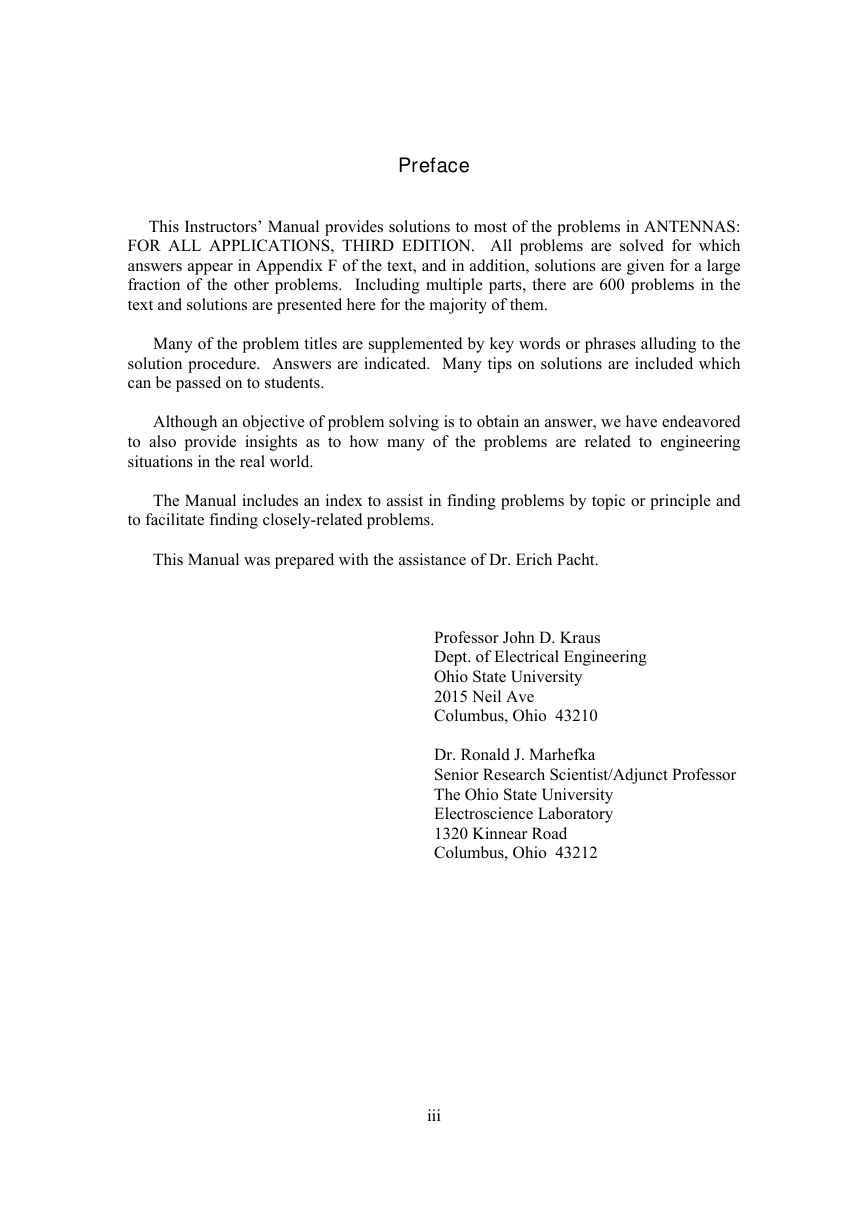
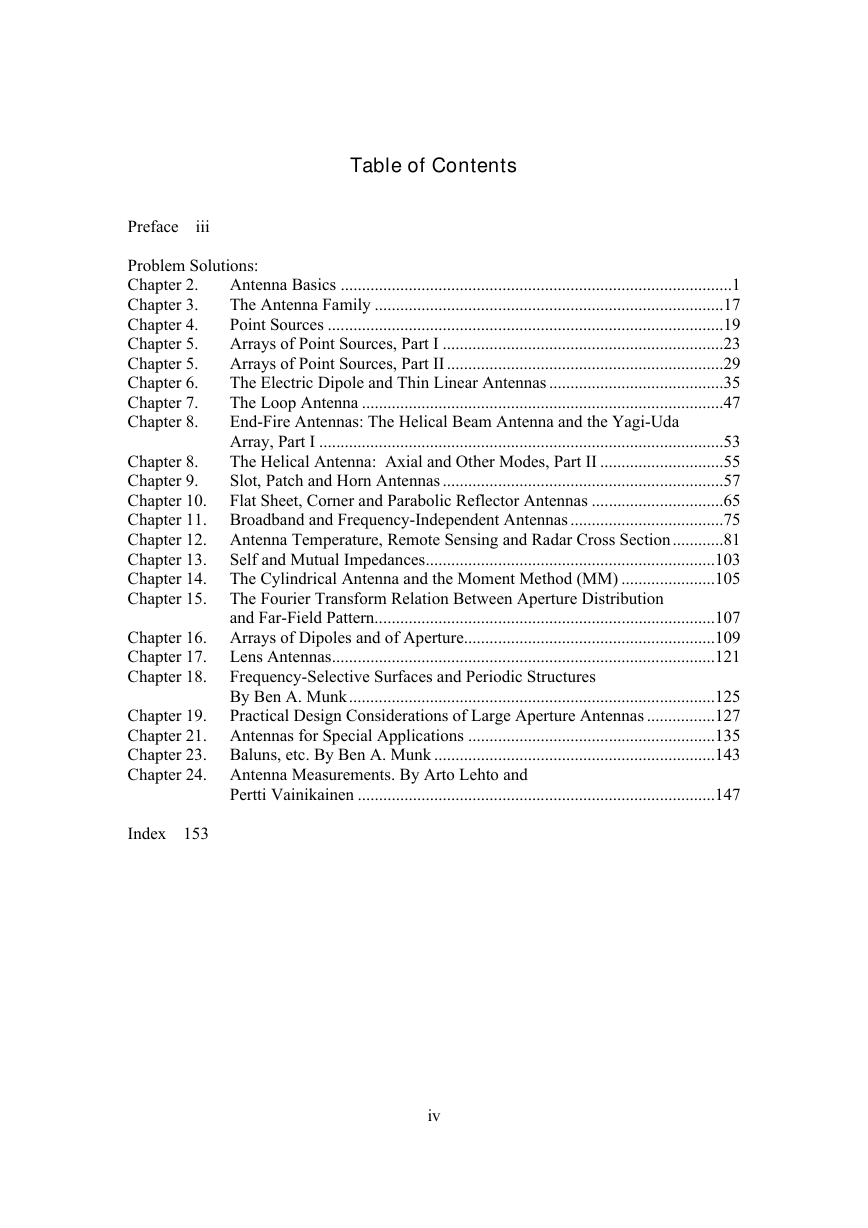
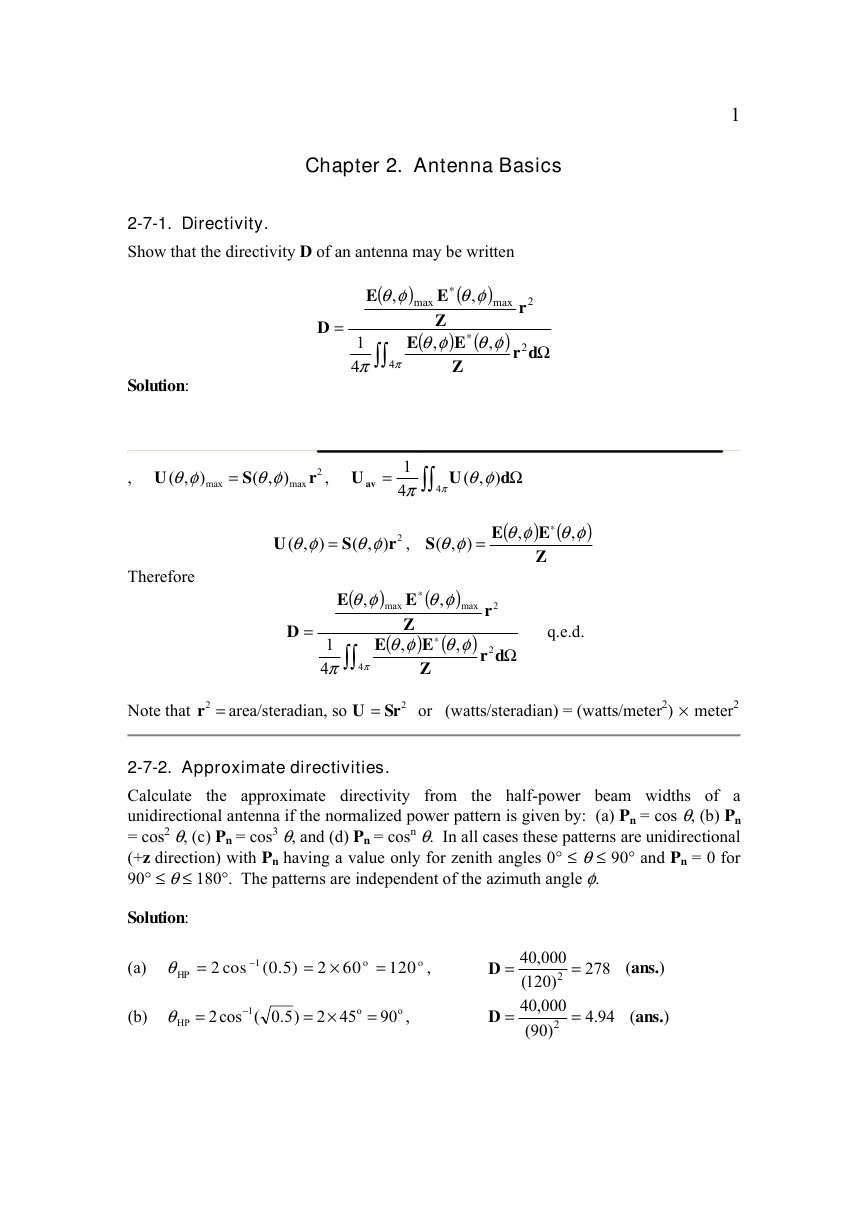
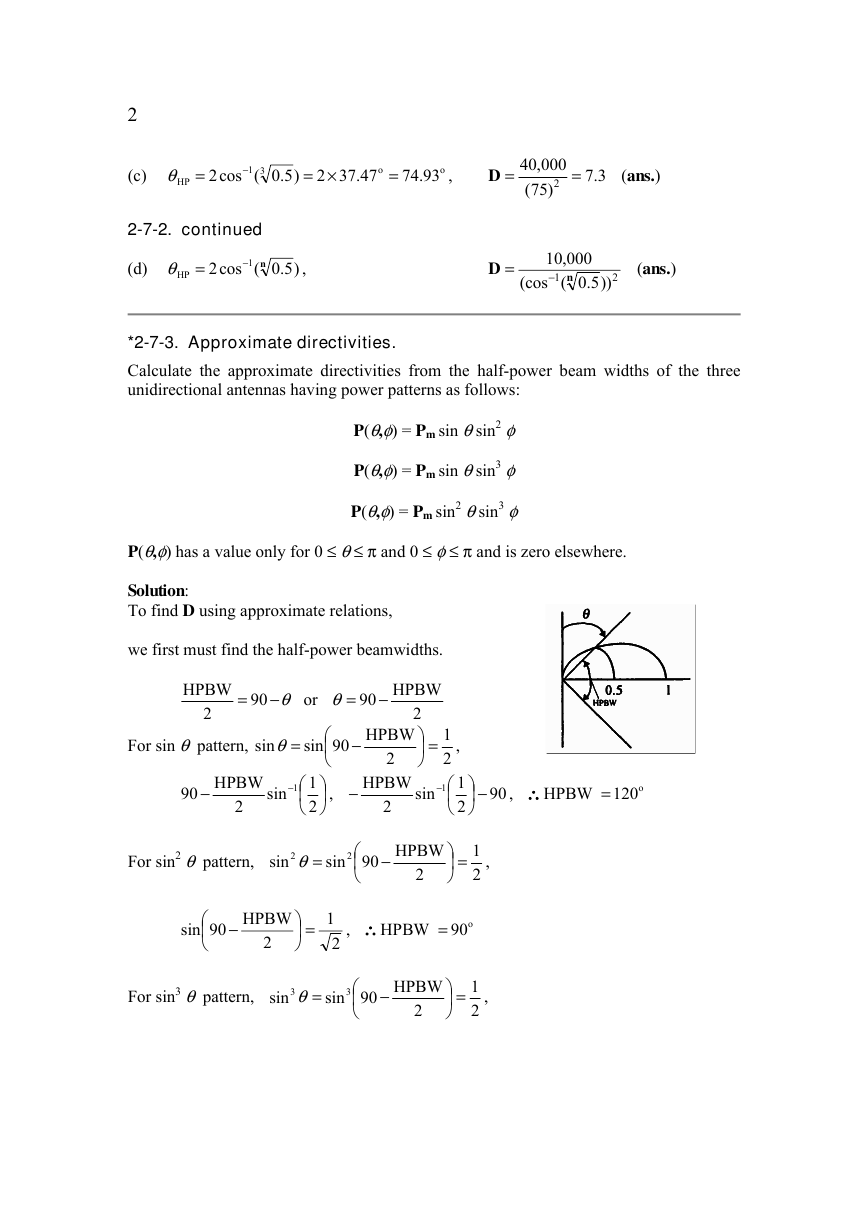
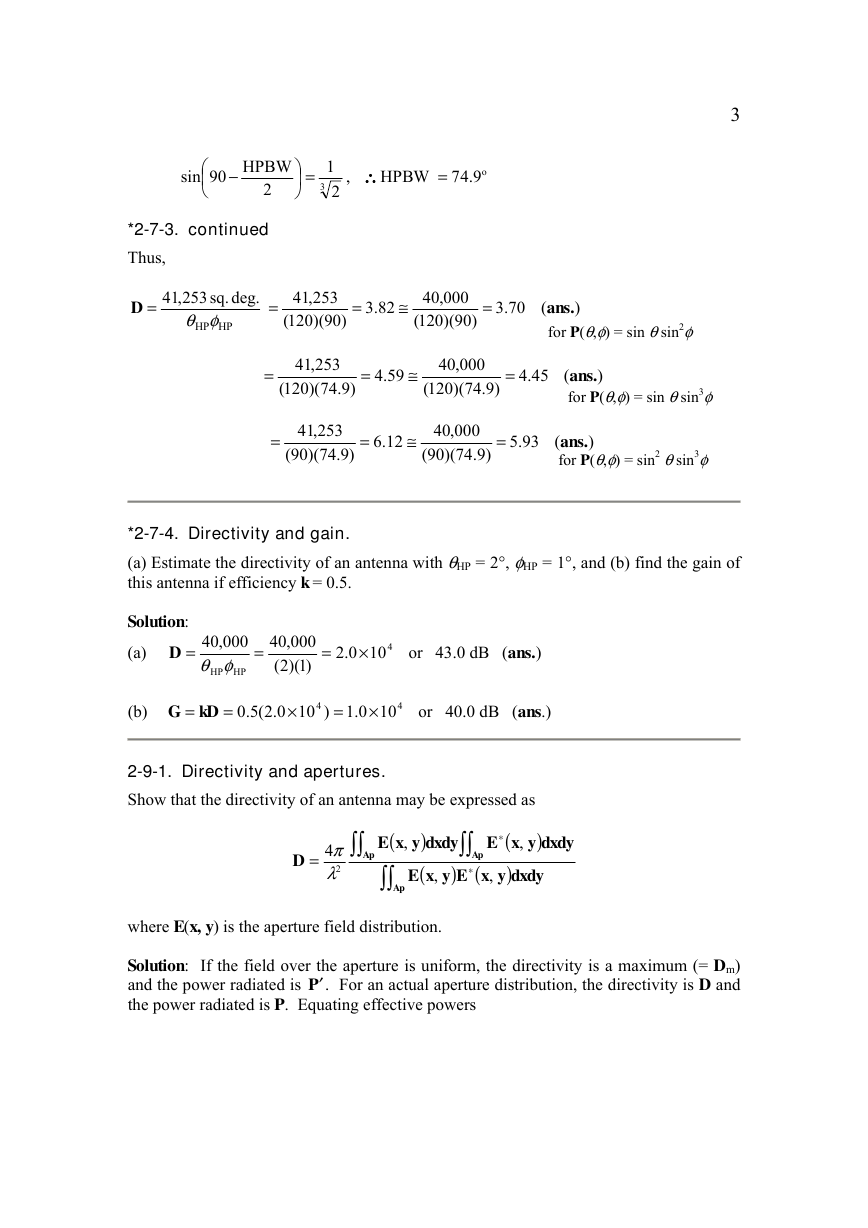

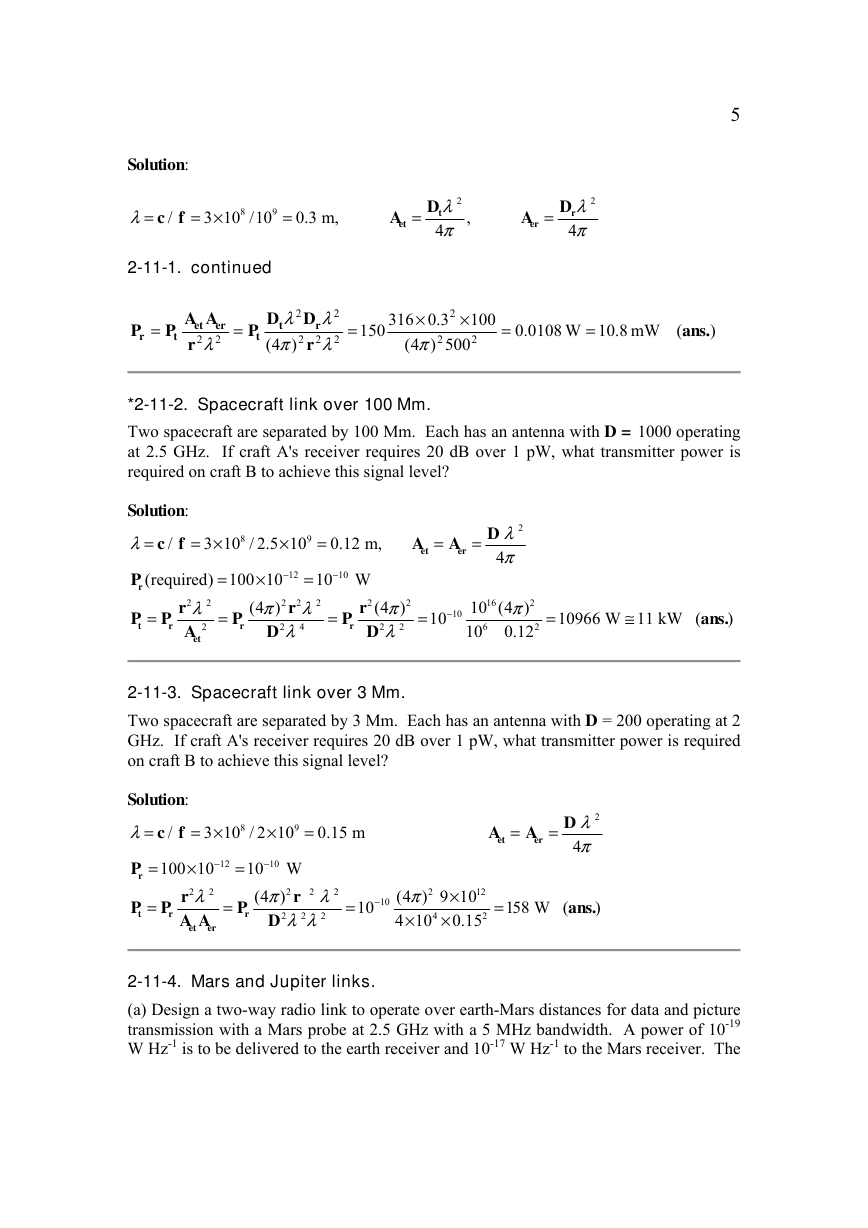
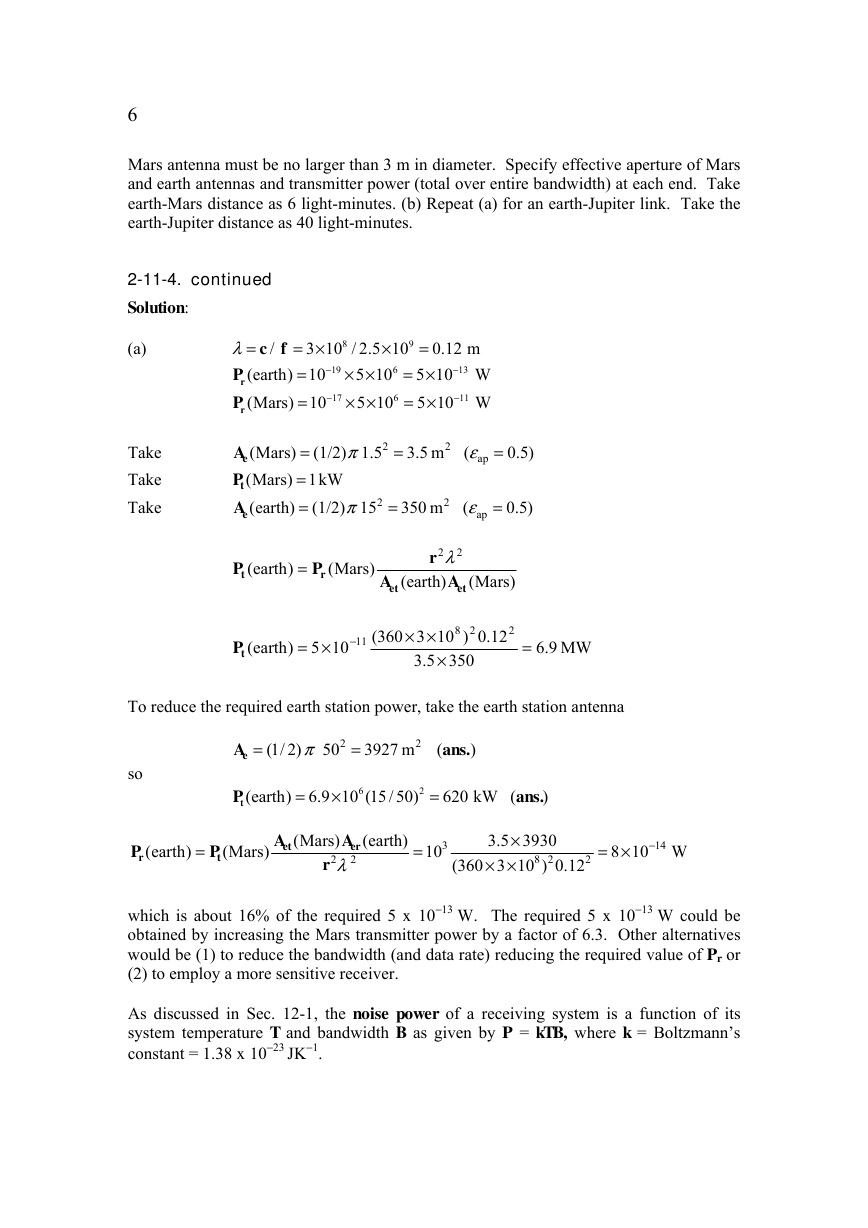








 2023年江西萍乡中考道德与法治真题及答案.doc
2023年江西萍乡中考道德与法治真题及答案.doc 2012年重庆南川中考生物真题及答案.doc
2012年重庆南川中考生物真题及答案.doc 2013年江西师范大学地理学综合及文艺理论基础考研真题.doc
2013年江西师范大学地理学综合及文艺理论基础考研真题.doc 2020年四川甘孜小升初语文真题及答案I卷.doc
2020年四川甘孜小升初语文真题及答案I卷.doc 2020年注册岩土工程师专业基础考试真题及答案.doc
2020年注册岩土工程师专业基础考试真题及答案.doc 2023-2024学年福建省厦门市九年级上学期数学月考试题及答案.doc
2023-2024学年福建省厦门市九年级上学期数学月考试题及答案.doc 2021-2022学年辽宁省沈阳市大东区九年级上学期语文期末试题及答案.doc
2021-2022学年辽宁省沈阳市大东区九年级上学期语文期末试题及答案.doc 2022-2023学年北京东城区初三第一学期物理期末试卷及答案.doc
2022-2023学年北京东城区初三第一学期物理期末试卷及答案.doc 2018上半年江西教师资格初中地理学科知识与教学能力真题及答案.doc
2018上半年江西教师资格初中地理学科知识与教学能力真题及答案.doc 2012年河北国家公务员申论考试真题及答案-省级.doc
2012年河北国家公务员申论考试真题及答案-省级.doc 2020-2021学年江苏省扬州市江都区邵樊片九年级上学期数学第一次质量检测试题及答案.doc
2020-2021学年江苏省扬州市江都区邵樊片九年级上学期数学第一次质量检测试题及答案.doc 2022下半年黑龙江教师资格证中学综合素质真题及答案.doc
2022下半年黑龙江教师资格证中学综合素质真题及答案.doc